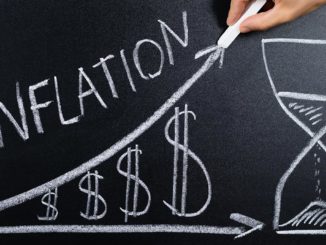
What are the consequences of the Green Asset Ratio for EU banks? And where does the introduction of this ratio originate from? MBS Professor Dr. Johannes Hofinger has some interesting answers!
Things are getting serious. The time for simply discussing sustainability is nearly over. As from the start of 2024, EU banks will have to produce concrete figures demonstrating the extent to which their business activities already meet sustainability criteria by applying the Green Asset Ratio (GAR). This means that, for the first time, progress towards climate neutrality will become transparent and measurable. By clearly indicating their current status, some banks will earn public praise, others public censure. For bachelor’s and master’s students of Munich Business School, this means plenty of opportunities to do research in their theses!
“Inventory” of sustainable business models boosts actual demand
Large, publicly traded undertakings in the EU – including banks – have been producing qualitative reports on the sustainability of their economic activities for years, as part of their non-financial reporting obligations under the NFRD1 and, over the next years, the CSRD2. The question of which economic activities may justifiably be regarded as sustainable, and what goals they are intended to achieve, has long hampered the intensity and quality of corporate sustainability efforts. In 2020, a legal framework was adopted in the form of the EU Taxonomy Regulation3 which, while very technical in nature, does provide in-depth answers to this question. Or at least, to a large part of this question, in that it deals primarily with issues relating to climate change mitigation and climate change adaptation – the retrospective addition of further provisions covering other environmental objectives is expected in the course of 2023. It is also important to note that the jury is still out on the use of nuclear energy and natural gas as bridging technologies – a proposition that has proved politically controversial.
Green Asset Ratio – the definitive sustainability metric for banks
Article 8 of the EU Taxonomy Regulation requires large, publicly traded undertakings in the EU to disclose quantitative information (in the form of KPIs – Key Performance Indicators) that make it possible to assess the sustainability of their business activities. Non-financial companies measure this ratio by reference to their sustainably generated revenues and sustainable capital expenditure (CapEx), plus – where applicable – their operating expenditure (OpEx). For financial institutions, the Green Asset Ratio was set up as a more meaningful metric4. This indicator defines the proportion of sustainably financed (= taxonomy-aligned) economic activities and sustainable investments as a share of total assets (“covered assets”). Additional, more extensive disclosure requirements5 are intended to make the transactions and assumptions underlying the Green Asset Ratio – such as classification by physical/transitional risk or breakdown by sector, timeframe and Scope 3 emissions – fully transparent.
The challenge for banks: taxonomy eligibility, taxonomy alignment and GAR
But why are things now getting “serious”? It is clear that analysing the taxonomy-eligible and consequently taxonomy-aligned compliance of their business activities is already a challenge for banks. But this should not distract us from appreciating the importance of the “after the fact” consequences of publishing a Green Asset Ratio in terms of its impact on the financial markets. Not all GARs will please all stakeholders (including social or socio-political interest groups). We can expect to see critical scrutiny both within and outside the organisation, the consequences of which could be far-reaching. Not only will they be affected by the currently widespread “culture of outrage”; they could also result in reputational damage, potentially impacting share prices and business relationships, as well as liability issues associated with “environmentally harmful” business conduct at corporate and management level.
Banks with taxonomy-relevant information have an advantage when calculating Green Asset Ratios
As things stand, banks have only been able to classify a fraction of their balance-sheet assets under the taxonomy. What are known as “taxonomy-eligible” economic activities should fall within the scope of the taxonomy as a matter of course; at the same time, the institutions should also have obtained the data they need to assess their customers’ economic activities. In principle, the EU taxonomy targets large, publicly traded undertakings that are already capable of providing taxonomy-relevant information. This means that banks with a corresponding focus on such enterprise customers should have certain advantages when calculating their GARs, compared to institutions that specialise primarily in SME and/or retail finance.
Banks should immediately carry out GAR projections, to gain a first impression of the probable level of the ratio. This preliminary metric is essential for ongoing calibration, in that it indicates the appropriate direction for future management decisions. Bank associations also have a role to play here, by enabling intra-sectoral comparisons so that individual banks can identify and respond to their positions in bank rankings prior to the Green Asset Ratio publication deadlines. Not for nothing does the EBA report6 published in June 2021 repeatedly emphasize the urgent recommendation by Germany’s financial supervisory authority that all bank employees should be given comprehensive training in ESG-related matters! Munich Business School acts in this respect by integrating sustainability-related subjects in their finance courses in the bachelor’s, master’s and MBA programs.
We can expect the publication of GARs to have a broader impact than solvency and liquidity ratios combined. It is more than advisable – it is vital! – for banks to devise a suitable strategy in good time, i.e. before the end of 2022. This strategy should cover both the bank’s efforts to transition to sustainable business activities, and its response to potential reputational or liability issues.
The author and his co-author Patrik Buchmüller are responsible for the content and form of this article.
Sources:
[1] NFRD Non-Financial Reporting Directive (Directive 2014/95/EU).
[2] CSRD Corporate Sustainability Reporting Directive.
[3] EU-Taxonomy Regulation (Regulation (EU) 2020/852).
[4] Delegated Act from 6 July 2021 supplementing Art. 8 of Regulation (EU) 2020/852 („Disclosures Delegated Act“).
[5] ITS on prudential disclosures on ESG risks in accordance with Article 449a CRR from 24 June 2022.
[6] EBA Report on the Management and Supervision of ESG Risks for Credit Institutions and Investment Firms from 23 June 2021. EBA/REP/2021/18. Compare with text notes 202, 214, 216 or 226.




